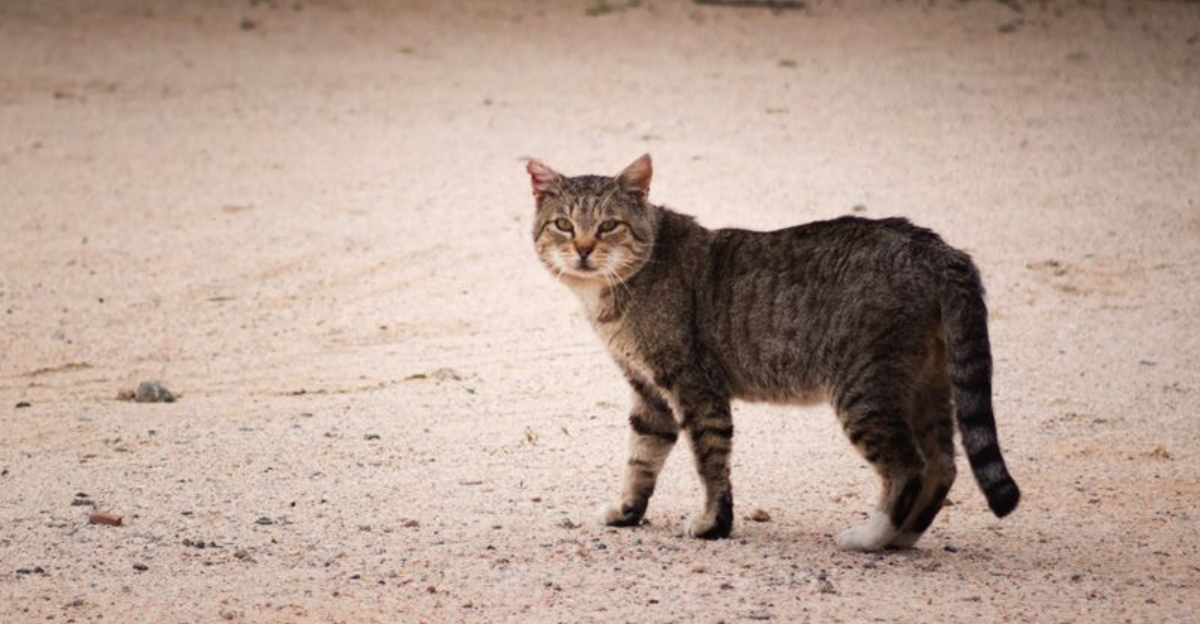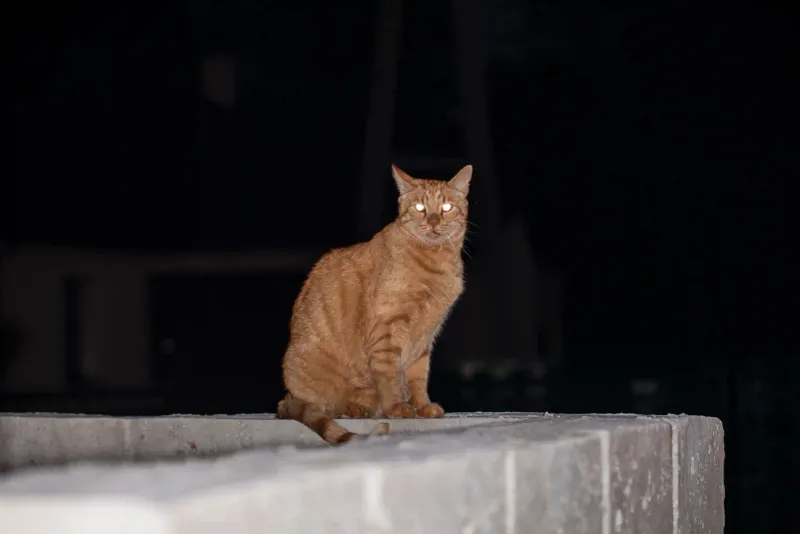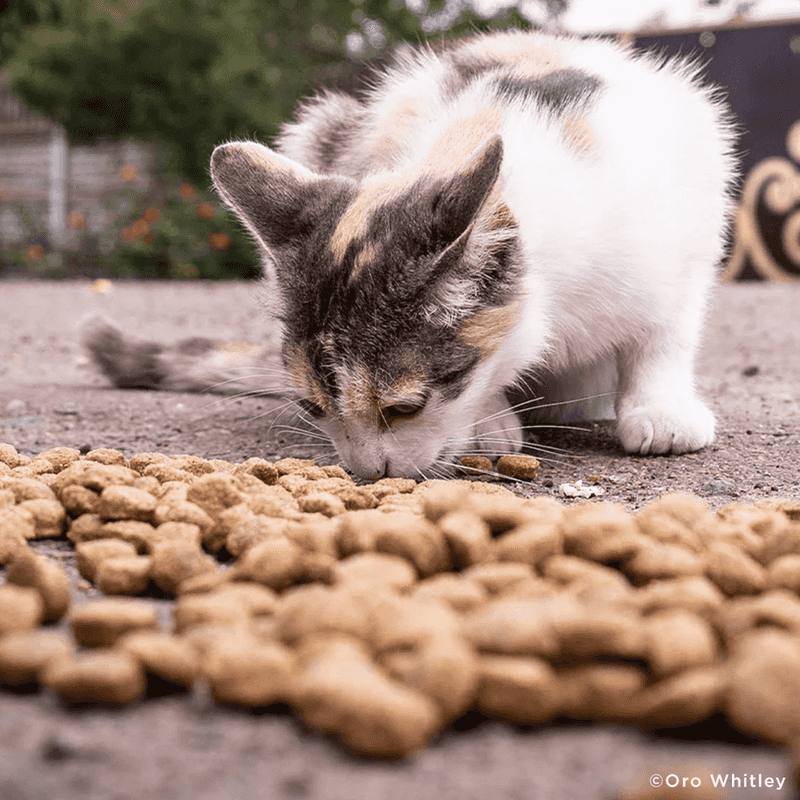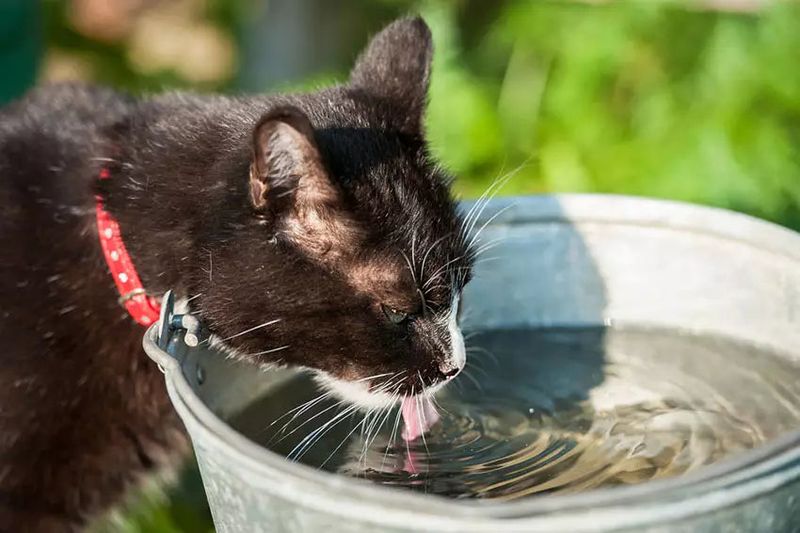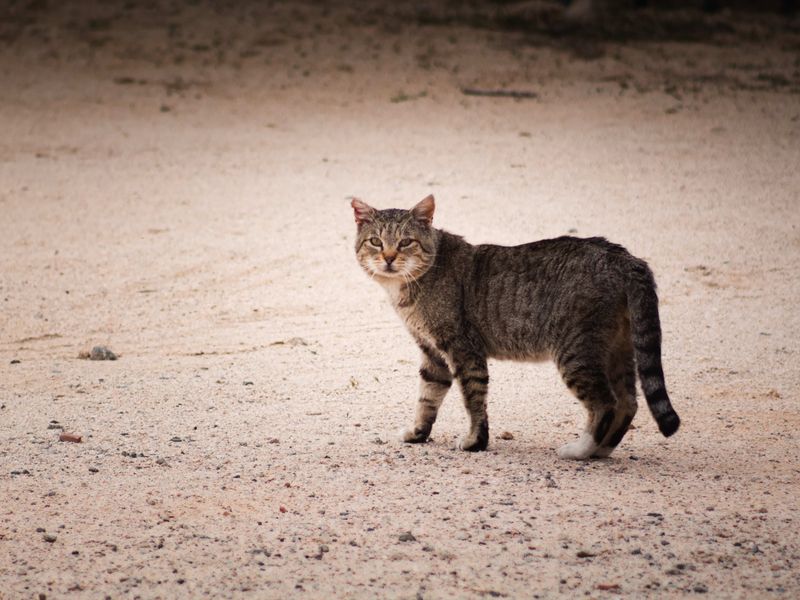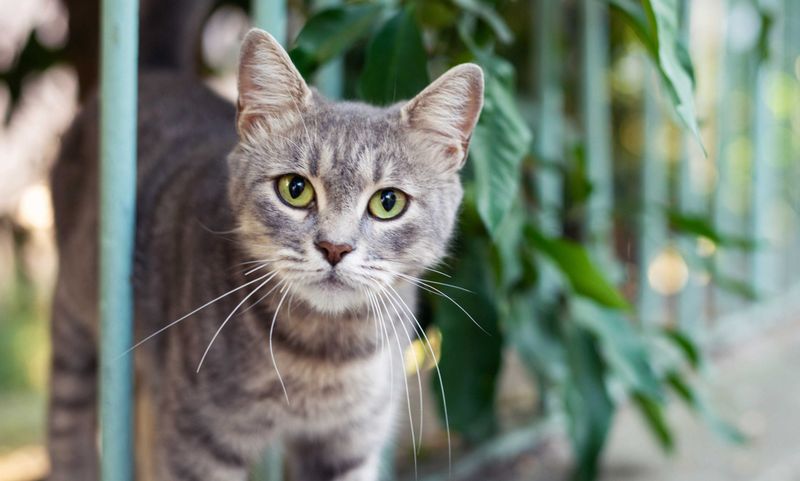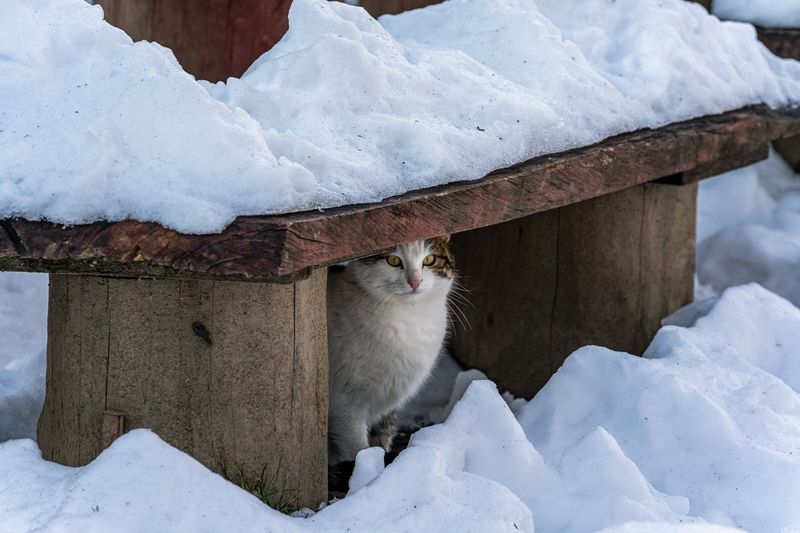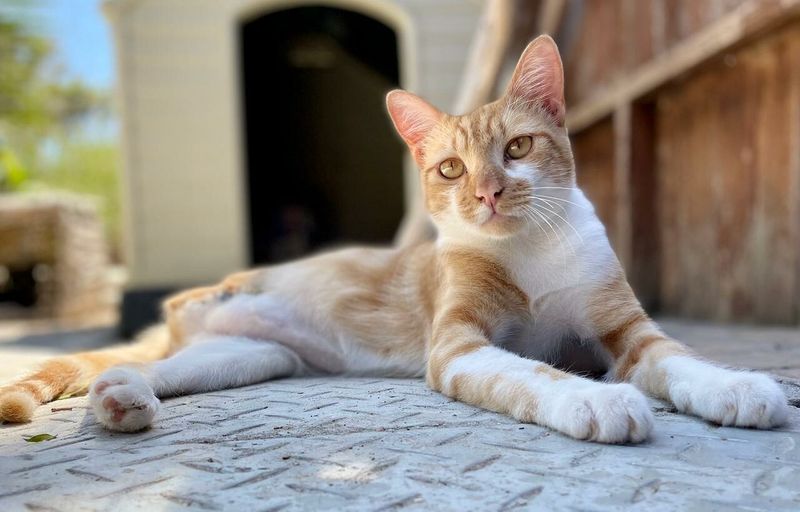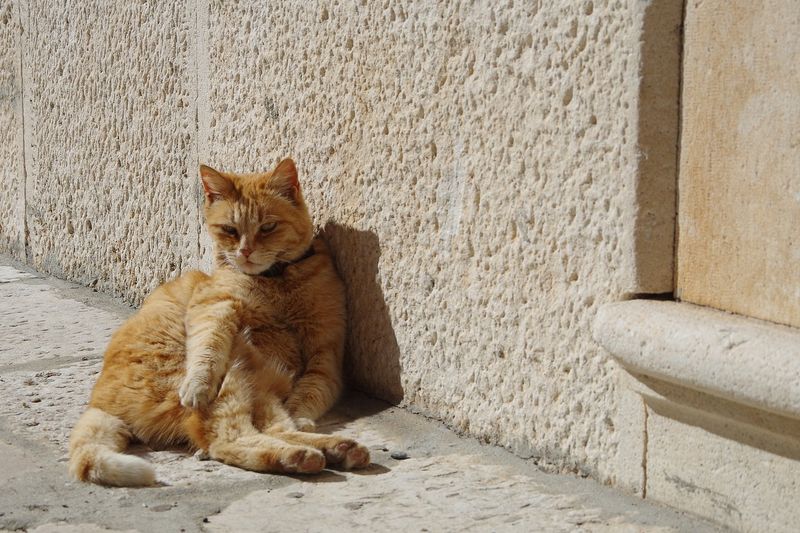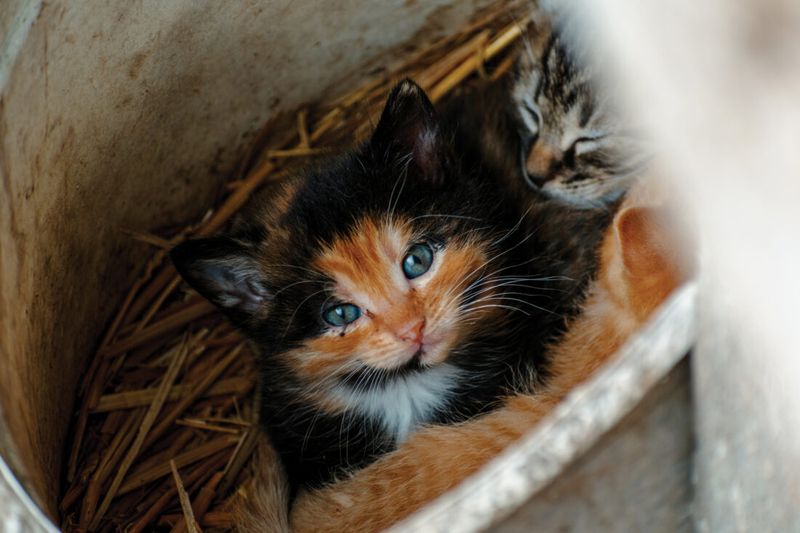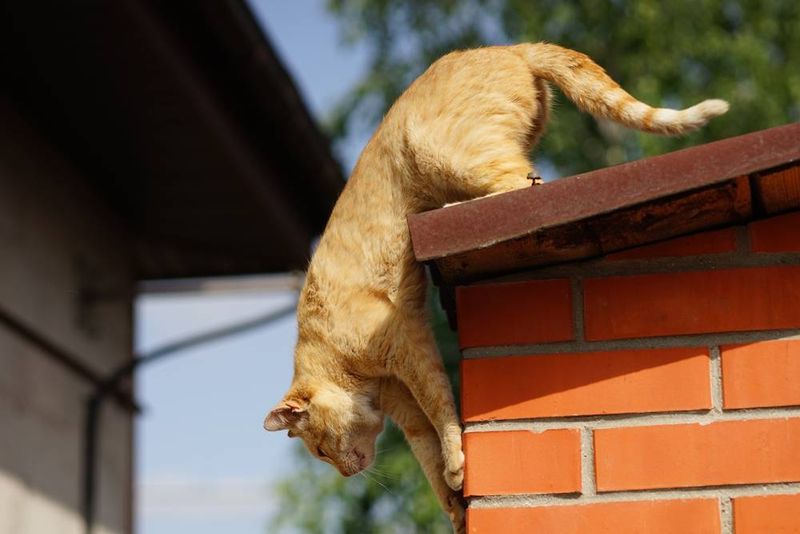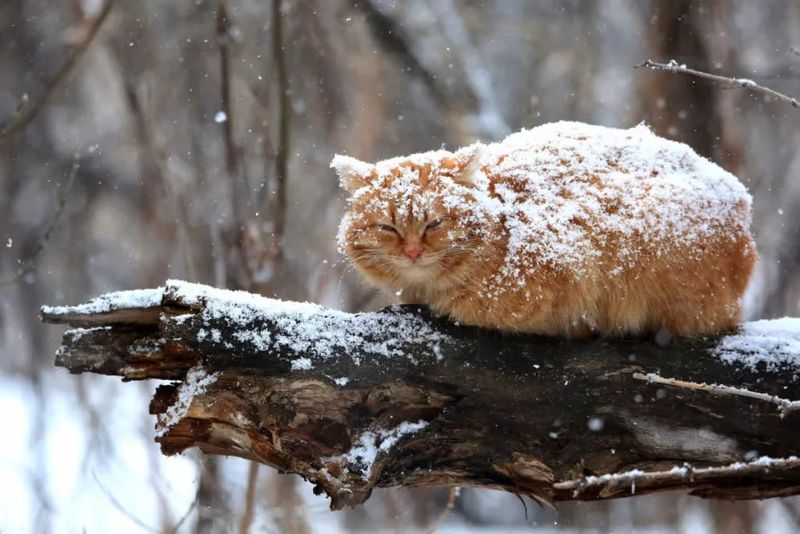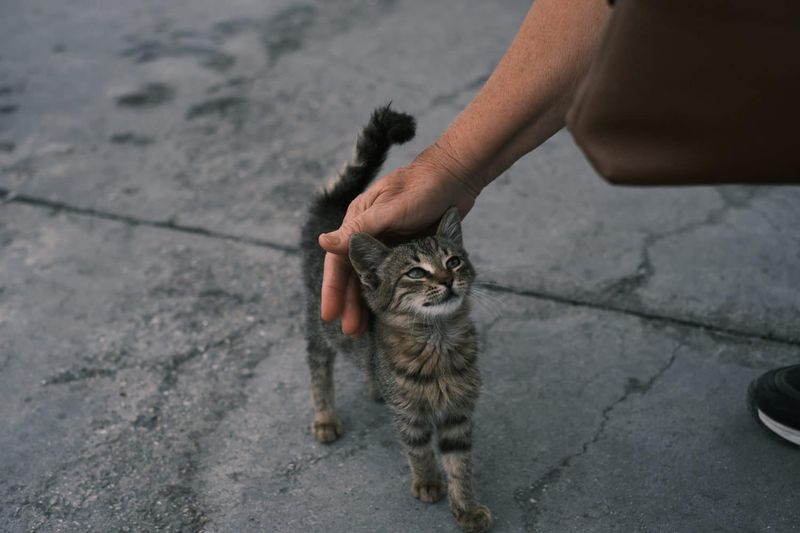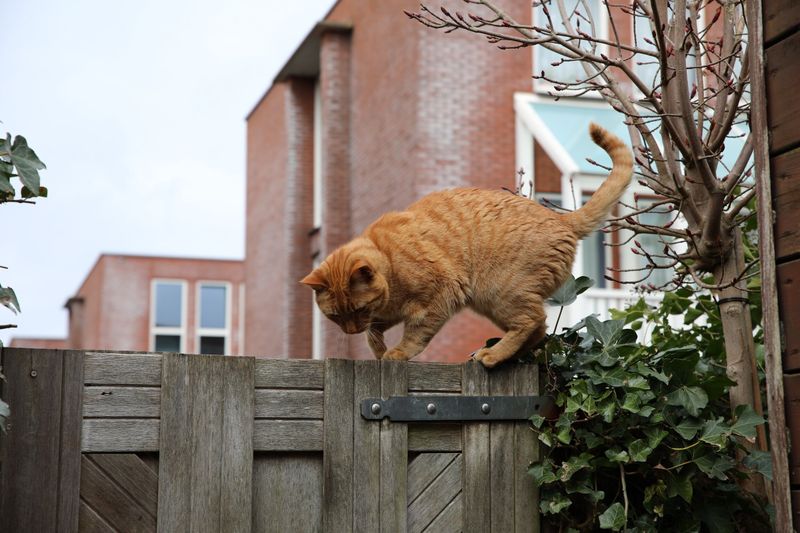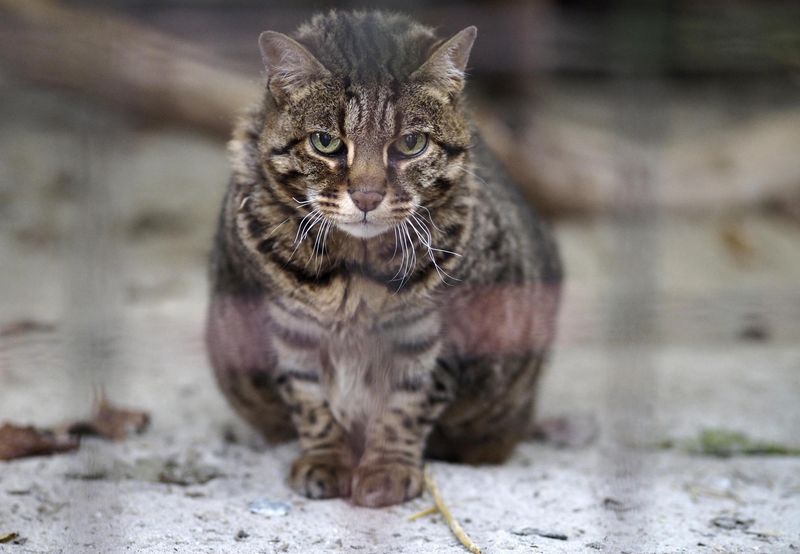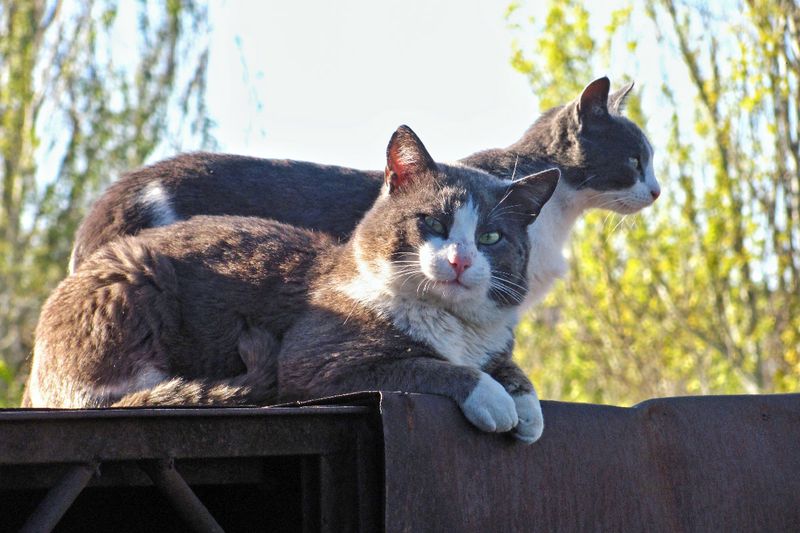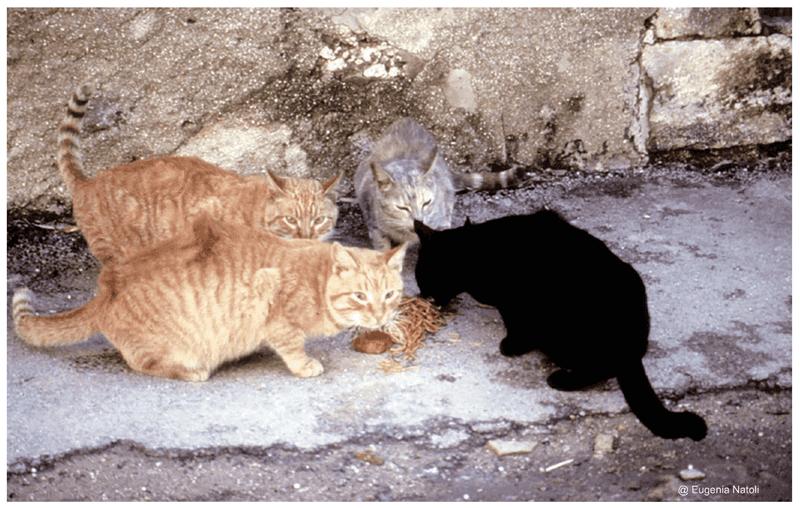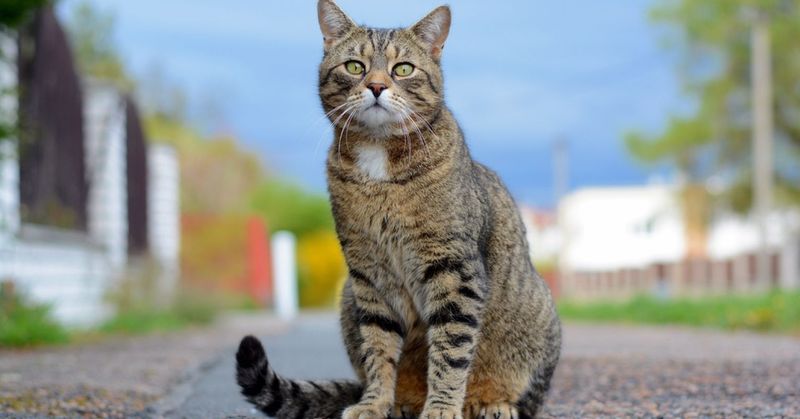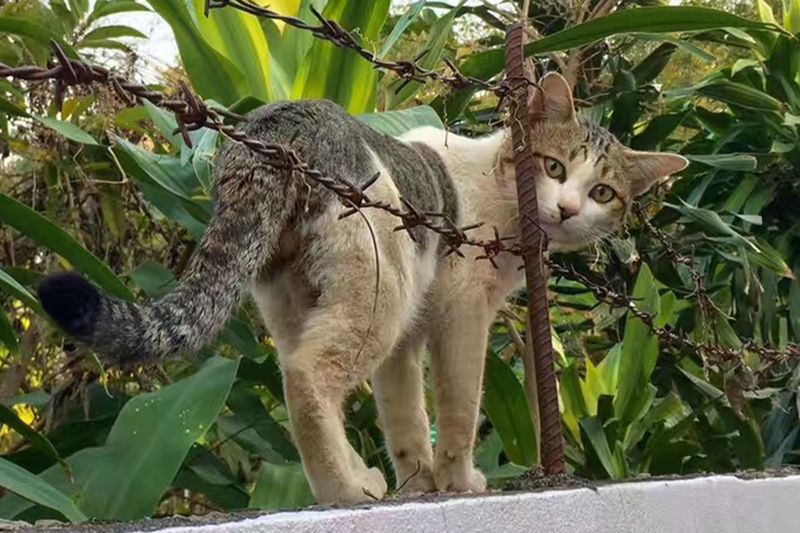📖 Table of Content:
- 1. Superior Hunting Instincts
- 2. Heightened Senses
- 3. Territorial Awareness
- 4. Weather Adaptation
- 5. Flexible Diet
- 6. Water-Finding Abilities
- 7. Rest Optimization
- 8. Social Structure Development
- 9. Disease Resistance
- 10. Predator Avoidance
- 11. Shelter Creation
- 12. Wound Healing Abilities
- 13. Temperature Regulation
- 14. Reproductive Efficiency
- 15. Accelerated Maturity
- 16. Extraordinary Agility
- 17. Weather Prediction
- 18. Human Relationship Navigation
- 19. Noise Tolerance
- 20. Calculated Risk Assessment
- 21. Seasonal Behavior Shifts
- 22. Scent Communication
- 23. Urban Navigation Skills
- 24. Conflict Avoidance
- 25. Energy Conservation
- 26. Memory Enhancement
- 27. Accelerated Learning
- 28. Facial Recognition
Stray cats encounter constant challenges while navigating life without human support. Both urban chaos and rural isolation present daily threats to their survival. Yet, these animals continue to carve out lives in the most unforgiving environments.
Over time, feral cats have developed an impressive set of survival strategies. Their instincts sharpen through necessity, allowing them to adapt quickly to unpredictable conditions. Resourcefulness becomes a way of life, not a choice.
From stealthy hunting skills to carefully chosen hiding spots, every behavior serves a purpose. Social structures, territorial awareness, and cautious movement all reflect deep-rooted resilience. These traits reveal just how powerfully nature equips them to endure.
1. Superior Hunting Instincts
Feral cats retain powerful hunting abilities that domesticated pets often lose. Their instincts remain razor-sharp, allowing them to catch prey with impressive success rates even when they haven’t been taught by their mothers.
These natural hunters can detect the slightest movements from potential meals. Their whiskers act as sensitive motion detectors while their ears can pinpoint tiny sounds from remarkable distances.
When stalking prey, they move with incredible patience, sometimes waiting motionless for the perfect moment to pounce. This innate skill ensures they can feed themselves without human assistance.
2. Heightened Senses
With senses sharpened by necessity, stray cats often outperform indoor cats in perception and awareness. Their eyesight thrives in dim lighting, making dawn and dusk the perfect windows for stealthy movement and hunting. Survival relies on this heightened sensitivity.
The whiskers of street cats serve as sophisticated sensory tools. These specialized hairs detect air currents, helping cats judge whether they can fit through tight spaces – crucial for escaping dangers or finding shelter.
Their hearing is phenomenally acute, capable of detecting the high-frequency sounds of rodents from significant distances. This sensory advantage helps them locate food and avoid threats.
3. Territorial Awareness
Street-smart cats develop detailed mental maps of their territories, memorizing every potential food source, shelter spot, and escape route. This spatial intelligence helps them navigate efficiently while minimizing energy expenditure.
Each cat establishes boundaries through scent marking, creating invisible borders that reduce conflict with other felines. These territorial markers communicate important information about the cat’s identity, health status, and reproductive availability.
A stray’s territory typically spans 1-2 acres in urban environments but can expand to over 1,000 acres in rural settings. This adaptable approach to territory management allows them to survive in diverse environments.
4. Weather Adaptation
To withstand harsh winter conditions, stray cats undergo significant changes in their fur. A dense undercoat develops beneath their outer layer, offering vital protection against the cold. In some cases, this seasonal coat becomes up to 30% thicker than in warmer months.
During extreme weather, they seek out microenvironments that offer protection. Car engines, building crawlspaces, and abandoned structures become lifesaving shelters that trap body heat and block wind.
Their metabolism adjusts seasonally, too. Winter brings increased fat storage capabilities and reduced activity during the coldest hours, conserving precious energy when food sources become scarce.
5. Flexible Diet
Unlike their pampered domestic relatives, stray cats develop impressive dietary flexibility. They become opportunistic omnivores, consuming everything from insects and small mammals to discarded human food and even certain plants when necessary.
Their digestive systems adapt to handle less-than-ideal food sources. Stomach acid levels may increase to better process scavenged items and neutralize potential pathogens found in spoiled foods.
Food caching behaviors emerge in times of plenty. Many strays will bury excess food for later consumption, creating natural reserves for leaner periods – a critical survival strategy during seasonal food shortages.
6. Water-Finding Abilities
Finding clean water presents a constant challenge for stray cats. Their keen senses help them locate unconventional water sources like condensation on pipes, rainwater collected in objects, or even morning dew on plants.
Strays develop efficient water conservation mechanisms within their bodies. Their kidneys become extraordinarily efficient at concentrating urine, extracting maximum moisture from their food, and minimizing water loss.
Many learn to recognize the sound of running water from great distances. This adaptation draws them to leaky outdoor faucets, sprinkler systems, and other reliable water sources that might otherwise go unnoticed by less observant creatures.
7. Rest Optimization
Rest doesn’t mean complete vulnerability for stray cats—they can sleep for up to 16 hours while still staying aware of their surroundings. Their brains enter a state of partial rest, keeping one side alert to danger. This light sleep pattern is key to surviving unpredictable conditions.
Safe sleeping spots become precious knowledge. Elevated locations, hidden nooks, and abandoned structures offer protection from predators and weather while providing quick escape routes if needed.
Their body temperature regulation adapts to conserve energy during rest periods. By curling tightly into balls, they minimize heat loss through exposed surface area – a simple yet effective technique that reduces caloric needs during inactive periods.
8. Social Structure Development
Contrary to popular belief, many stray cats form complex social groups called colonies. These communities provide collective security, shared knowledge of resources, and cooperative kitten-rearing when food is plentiful.
Colony members develop sophisticated communication systems using body language, vocalizations, and scent markers. These signals help maintain group cohesion while minimizing actual physical confrontations that could cause injury.
Hierarchies emerge naturally within colonies, with dominant cats gaining priority access to food and shelter. However, these structures remain flexible, allowing for leadership changes based on changing circumstances or the arrival of new, stronger individuals.
9. Disease Resistance
Living outdoors exposes street cats to countless health threats, but it also sharpens their defenses. Constant contact with pathogens pushes their immune systems to adapt and grow stronger. This ongoing struggle favors survival of the fittest, passing resilience down the line.
Self-medication behaviors emerge among strays. Many instinctively consume certain plants with antiparasitic properties or lick wounds with saliva containing natural antibacterial compounds.
Grooming rituals intensify among feral cats despite their rough appearance. This constant cleaning removes parasites, promotes wound healing, and distributes natural oils that protect their skin and fur from environmental hazards – all critical for surviving without veterinary care.
10. Predator Avoidance
Navigating urban jungles, street-savvy cats become masters of threat detection. They effortlessly separate true predators from mere nuisances, conserving energy by fleeing only when survival demands it.
Their movement patterns adapt to minimize exposure. Many become crepuscular, being most active during dawn and dusk when larger predators may be less active but visibility remains sufficient for hunting.
Escape routes are mentally mapped throughout their territory. Every location where a stray cat spends time will have at least two exit strategies – a primary path and a backup plan if the first option becomes blocked by an unexpected threat.
11. Shelter Creation
Resourceful strays transform unlikely spaces into protective shelters. Abandoned vehicles, crawl spaces, storm drains, and even piles of discarded materials become valuable real estate in their world.
Many develop nesting behaviors, gathering soft materials like leaves, paper, or discarded fabric to create insulated beds. These collections help preserve body heat during cold weather and provide comfort for nursing mothers.
Location selection shows sophisticated decision-making. The best shelter spots balance protection from elements, proximity to food sources, and security from predators. Some cats even maintain multiple shelter options, rotating between them based on changing conditions.
12. Wound Healing Abilities
Feral cats possess accelerated healing capabilities compared to their pampered counterparts. Their saliva contains higher concentrations of growth factors and antimicrobial compounds that promote rapid wound closure and infection prevention.
Constant movement encourages blood circulation to injured areas. Unlike house cats that might rest excessively when hurt, strays must keep moving to survive, which inadvertently promotes healing through increased blood flow.
Pain tolerance develops out of necessity. Strays continue functioning despite injuries that would immobilize domestic cats, allowing them to hunt and defend territory even while healing. This stoic response to injury proves essential for surviving without human medical intervention.
13. Temperature Regulation
Experts in comfort, stray cats instinctively find the best microclimates to suit the season. Cold months lead them to sunlit surfaces that store warmth, while hot days send them seeking shade and fresh air. This seasonal savvy helps them thrive outdoors year-round.
Their fur adapts seasonally without human grooming. Winter coats grow thicker with dense undercoats, while summer brings natural shedding that creates a lighter, more heat-tolerant covering.
Body positioning changes with temperature needs. Cold weather prompts the classic tight ball that minimizes exposed surface area, while hot conditions see cats stretching out to maximize heat dissipation through paw pads and exposed belly skin.
14. Reproductive Efficiency
Remarkably, female stray cats can delay pregnancy implantation when faced with stress or limited resources. This natural mechanism times births for periods when conditions favor kitten survival. Such reproductive flexibility increases the chances of healthy litters.
Litter sizes adjust to environmental conditions. When resources are abundant, females produce larger litters, but during harsh periods, fewer kittens are born, conserving the mother’s limited energy for those with the best survival odds.
Birth timing shows seasonal intelligence. Most feral kittens arrive during spring or fall when temperatures are moderate and prey is abundant, avoiding the extreme challenges of summer heat or winter cold that would threaten vulnerable newborns.
15. Accelerated Maturity
Stray kittens develop survival skills at astonishing speeds. While domestic kittens might play for months, feral youngsters begin practicing hunting moves within weeks, preparing for self-sufficiency by necessity.
Physical maturation accelerates in response to environmental pressures. Feral cats reach sexual maturity earlier than their domestic counterparts, sometimes as young as 4-5 months, compared to the typical 6-9 months for house cats.
Weaning happens faster in the wild. Mother cats begin introducing their kittens to solid food earlier, often by 3-4 weeks, ensuring they develop the skills to feed themselves should something happen to her.
16. Extraordinary Agility
Life on the streets calls for athletic skills beyond those of most house cats. Stray cats often demonstrate astounding jumping power, vaulting fences taller than six feet from a single leap when danger looms.
Their balance becomes nearly supernatural. Moving confidently along narrow ledges, fence tops, and tree branches provides access to food sources and escape routes unavailable to ground-bound predators.
Landing mechanics improve through constant practice. The ability to fall from significant heights and walk away uninjured becomes a literal lifesaver, allowing escapes from dangerous situations that would injure less experienced cats. Their bodies instinctively rotate mid-air to ensure they land on their feet.
17. Weather Prediction
Stray cats develop an uncanny ability to sense approaching weather changes. Their sensitive inner ears detect subtle barometric pressure shifts that precede storms, giving them valuable preparation time.
Behavior changes become noticeable before bad weather arrives. Increased hunting activity often precedes storms as cats instinctively prepare for periods when hunting will be difficult.
Shelter preparation intensifies with approaching fronts. Many strays will reinforce or relocate their nesting areas hours before humans notice any weather changes, seeking higher ground before floods or more protected spaces before high winds arrive.
18. Human Relationship Navigation
With keen instincts, stray cats read human behavior to separate danger from generosity. They identify friendly faces likely to offer help, while staying cautious of those who might harm them.
Body language around humans becomes a sophisticated communication system. Many street cats learn to signal non-aggression while maintaining safe distances, encouraging food provision without allowing dangerous proximity.
Resource assessment skills develop around human habitations. Cats identify which homes regularly put out garbage containing food scraps, which yards have accessible water sources, and which humans might intentionally leave food without trying to capture them.
19. Noise Tolerance
Urban strays develop remarkable noise filtering abilities. Their brains learn to ignore constant background sounds like traffic while remaining alert to specific noises that signal danger or opportunity.
Sleep patterns adapt to urban rhythms. Many city-dwelling ferals become active during quieter nighttime hours while developing the ability to sleep through daytime commotion that would keep most animals constantly alert.
Sound association becomes highly specialized. A cat might sleep through construction noise but instantly wake at the specific sound of a can opener or food package rustling several apartments away – a selective hearing adaptation that conserves energy while maximizing survival opportunities.
20. Calculated Risk Assessment
The challenges of street life force cats to develop keen evaluation skills. They constantly measure the pros and cons before acting, ensuring their safety and success.
Their risk tolerance adjusts based on need. A well-fed stray might avoid a dangerous food source that a hungry one would approach, showing situation-specific decision-making rather than fixed behavior patterns.
Observation periods become longer and more thorough before action. Unlike impulsive house cats, ferals might watch a potential food source for extended periods, assessing all possible threats before approaching – patience that reflects their survival-oriented mindset.
21. Seasonal Behavior Shifts
Feral cats dramatically alter their routines with the seasons. Summer might find them hunting primarily at dawn and dusk to avoid heat, while winter sees increased daytime activity to capitalize on warmer hours.
Coat maintenance changes seasonally without human intervention. Grooming increases during shedding seasons, with cats spending extra hours removing loose fur that could otherwise impede temperature regulation.
Territorial boundaries flex with the calendar. Winter often brings reduced territory size to conserve energy, while abundant summer resources allow for expanded hunting grounds. This adaptive approach to space usage maximizes survival odds through changing conditions.
22. Scent Communication
Highly developed scent systems allow stray cats to convey detailed messages through their markings. These chemical cues communicate everything from who they are to how they’re feeling and their reproductive condition.
Scent checking becomes a critical information-gathering tool. By investigating markings left by other cats, strays gather intelligence about potential mates, rivals, or community members without direct confrontation.
Strategic marking locations show remarkable intelligence. Cats choose highly visible spots with good air circulation to maximize message transmission, creating a neighborhood bulletin board system that functions without requiring face-to-face meetings that might lead to dangerous conflicts.
23. Urban Navigation Skills
City-dwelling strays master complex urban landscapes. They create mental maps of safe passages through dangerous areas, identifying routes that minimize exposure to threats like traffic or aggressive dogs.
Timing awareness becomes remarkably precise. Many learn traffic patterns and human schedules, crossing roads during predictable lulls or visiting potential food sources when humans typically discard edible waste.
Vertical thinking expands their world. Unlike many animals limited to ground-level movement, strays utilize three-dimensional urban environments, accessing rooftops, fire escapes, and elevated passages that provide both safety and efficient travel routes between resources.
24. Conflict Avoidance
Mastering the art of subtle communication, seasoned strays use body language to prevent conflicts. This skillful diplomacy protects them from injury and preserves energy for survival.
Time-sharing arrangements emerge in resource-rich areas. Different cats may use the same hunting grounds or shelter spots at different times, reducing direct competition without requiring physical confrontation.
Status displays replace actual combat. Through posturing, vocalizations, and scent marking, cats establish and maintain hierarchies with minimal physical contact. This system allows multiple cats to coexist in limited spaces while reducing the injury risks that would threaten their survival.
25. Energy Conservation
With survival as their guide, stray cats carefully budget every movement, choosing long stretches of stillness over needless activity.
Rest positions maximize efficiency. By selecting sheltered spots with ideal temperatures, they reduce the calories needed to maintain body heat, effectively stretching their limited food resources.
Activity timing shows remarkable metabolic awareness. Most hunting occurs during prime prey activity periods, while energy-intensive behaviors like territory patrol happen during milder weather conditions when the caloric cost of movement is lower.
26. Memory Enhancement
Street life demands exceptional memory capabilities. Strays develop detailed recall of food source locations, including which dumpsters are emptied on specific days or which homes might provide regular feeding.
Danger mapping becomes highly specific. Cats remember exactly where they encountered hostile dogs, aggressive humans, or other threats, creating mental no-go zones that help them navigate safely through complex environments.
Seasonal knowledge accumulates over time. Experienced strays remember which areas flood during rainy seasons, where snow drifts block access in winter, or which locations provide natural cooling during summer heat – critical information that improves with each passing year.
27. Accelerated Learning
Survival pressure creates rapid learning capabilities in stray cats. They require fewer experiences to form lasting associations between causes and effects compared to their domestic counterparts.
Observational learning becomes highly developed. Many strays learn new survival skills by watching other cats from safe distances, acquiring techniques without the dangerous trial-and-error process.
Problem-solving abilities sharpen through necessity. From figuring out how to access contained food sources to discovering shelter during extreme weather, the constant challenges of street life create cats with remarkable cognitive flexibility and innovative thinking.
28. Facial Recognition
Gifted with sharp recognition skills, stray cats can identify familiar faces from afar. They distinguish between humans and animals who offer kindness and those who bring danger.
Memory for specific humans shows remarkable longevity. Cats often remember people who have fed them, even after months or years of separation, immediately recognizing beneficial relationships worth rekindling.
Threat identification becomes highly specific. Rather than fearing all humans or dogs equally, experienced strays learn to recognize individual threatening animals or people, allowing them to conserve energy by fleeing only from actual dangers rather than potential ones.
